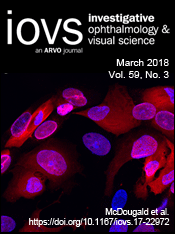Abstract
PURPOSE: Vernier and grating acuity can be measured with swept-parameter visual evoked potentials (sVEP). However, whether sVEP Vernier and grating acuities are comparable in predicting letter acuity has not been systematically evaluated. This study evaluated the validity and reliability of sVEP Vernier and grating acuity for the detection of amblyopia in adults.
METHODS: Three types of acuity were measured in 36 adults with amblyopia and 36 age-matched normal-vision controls. Letter acuity was measured with a logMAR chart. Both Vernier and grating acuity were estimated by sVEP and psychophysics for the same stimuli. Regression analyses were performed between the perceptual and electrophysiologic acuity measurements.
RESULTS: SVEP Vernier and grating acuities were significantly correlated with their corresponding psychophysical acuities (P < 0.001). Both the sVEP Vernier (P < 0.0001) and grating (P < 0.01) acuities were also significantly correlated with letter acuity. However, Vernier acuity more precisely reflected the magnitude of the letter acuity loss than did grating acuity for both sVEP and psychophysical measures. Repeating sVEP grating acuity tests with different temporal frequencies and modulation types indicated good reliability of sVEP acuity measures.
CONCLUSIONS: SVEP Vernier acuity has a 1:1 relationship with letter acuity, but sVEP grating acuity does not. SVEP Vernier acuity thus provides a better characterization of the magnitude of the amblyopic acuity loss than does sVEP grating acuity. Nonetheless, each of the sVEP measurements can be used to predict letter acuity and because they can be made without a behavioral response, they may be useful measures of visual function in pre- and nonverbal patients.
Free PMC article. PMCID: PMC5858252

